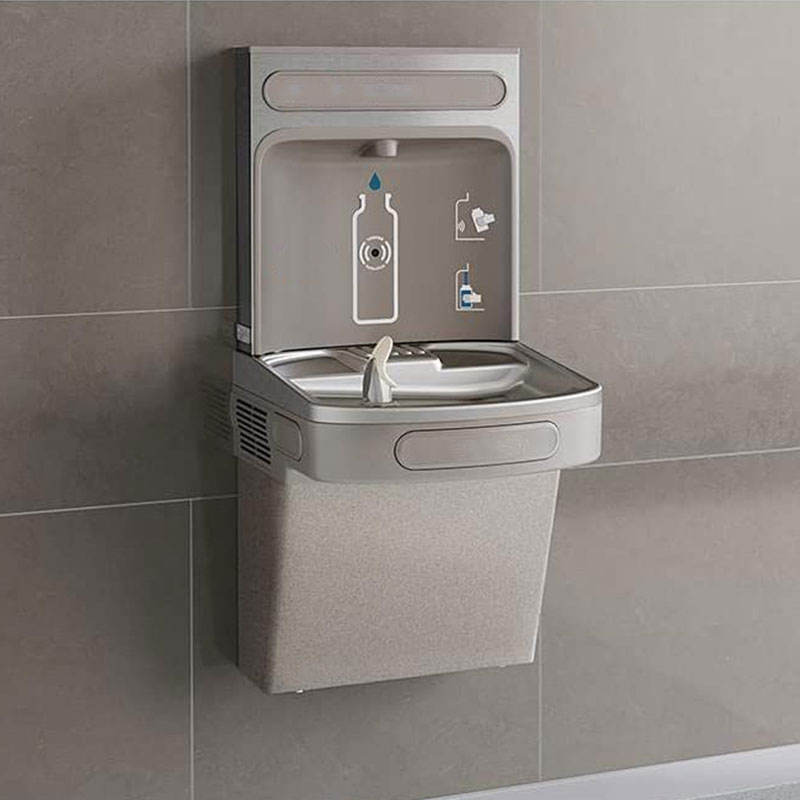 Hey urban explorers, park-goers, campus wanderers, and eco-conscious sippers! In a world drowning in single-use plastic, there’s a humble hero quietly offering free, accessible refreshment: the public drinking fountain. Often overlooked, sometimes mistrusted, but increasingly reinvented, these fixtures are vital pieces of civic infrastructure. Let’s ditch the stigma and rediscover the art of the public sip!
Hey urban explorers, park-goers, campus wanderers, and eco-conscious sippers! In a world drowning in single-use plastic, there’s a humble hero quietly offering free, accessible refreshment: the public drinking fountain. Often overlooked, sometimes mistrusted, but increasingly reinvented, these fixtures are vital pieces of civic infrastructure. Let’s ditch the stigma and rediscover the art of the public sip!
Beyond the “Ew” Factor: Busting Fountain Myths
Let’s address the elephant in the room: “Are public fountains actually safe?” The short answer? Generally, yes – especially modern, well-maintained ones. Here’s why:
Municipal Water is Rigorously Tested: Tap water feeding public fountains undergoes far more stringent and frequent testing than bottled water. Utilities must meet EPA Safe Drinking Water Act standards.
The Water is Flowing: Stagnant water is a concern; flowing water from a pressurized system is much less likely to harbor harmful bacteria right at the point of delivery.
Modern Tech is a Game-Changer:
Touchless Activation: Sensors eliminate the need to push germy buttons or handles.
Bottle Fillers: Dedicated, angled spouts prevent mouth contact entirely.
Antimicrobial Materials: Copper alloys and coatings inhibit microbial growth on surfaces.
Advanced Filtration: Many newer units have built-in filters (often carbon or sediment) specifically for the fountain/bottle filler.
Routine Maintenance: Reputable municipalities and institutions have scheduled cleaning, sanitization, and water quality checks for their fountains.
Why Public Fountains Matter More Than Ever:
The Plastic Apocalypse Fighter: Every sip from a fountain instead of a bottle prevents plastic waste. Imagine the impact if millions of us chose the fountain just once a day! #RefillNotLandfill
Hydration Equity: They provide free, critical access to safe water for everyone: kids playing in the park, people experiencing homelessness, workers, tourists, students, seniors on a walk. Water is a human right, not a luxury product.
Encouraging Healthy Habits: Easy access to water encourages people (especially kids) to choose water over sugary drinks while out and about.
Community Hubs: A working fountain makes parks, trails, plazas, and campuses more welcoming and livable.
Resilience: During heatwaves or emergencies, public fountains become vital community resources.
Meet the Modern Fountain Family:
Gone are the days of just one rusty spigot! Modern public hydration stations come in many forms:
The Classic Bubbler: The familiar upright fountain with a spout for sipping. Look for stainless steel or copper construction and clean lines.
The Bottle Filling Station Champion: Often combined with a traditional spout, this features a sensor-activated, high-flow spigot angled perfectly for filling reusable bottles. Game-changer! Many have counters showing plastic bottles saved.
The ADA-Compliant Accessible Unit: Designed at appropriate heights and with clearances for wheelchair users.
The Splash Pad Combo: Found in playgrounds, integrating drinking water with play.
The Architectural Statement: Cities and campuses are installing sleek, artistic fountains that enhance public spaces.
Smart Sipping Strategies: Using Fountains Confidently
While generally safe, a little savvy goes a long way:
Look Before You Leap (or Sip):
Signage: Is there an “Out of Order” or “Water Not Potable” sign? Heed it!
Visual Check: Does the spout look clean? Is the basin free of visible grime, leaves, or debris? Is water flowing freely and clearly?
Location: Avoid fountains near obvious hazards (like dog runs without proper drainage, heavy litter, or stagnant water).
The “Let it Run” Rule: Before drinking or filling your bottle, let the water run for 5-10 seconds. This flushes out any water that may have been sitting stagnant in the fixture itself.
Bottle Filler > Direct Sip (When Possible): Using the dedicated bottle filler spout is the most hygienic option, eliminating mouth contact with the fixture. Always carry a reusable bottle!
Minimize Contact: Use touchless sensors if available. If you must push a button, use your knuckle or elbow, not your fingertip. Avoid touching the spout itself.
Don’t “Slurp” or Put Your Mouth on the Spout: Hover your mouth slightly above the stream. Teach kids to do the same.
For Pets? Use designated pet fountains if available. Don’t let dogs drink directly from human fountains.
Report Problems: See a broken, dirty, or suspicious fountain? Report it to the responsible authority (park district, city hall, school facilities). Help keep them functional!
Did You Know?
Many popular apps like Tap (findtapwater.org), Refill (refill.org.uk), and even Google Maps (search “water fountain” or “bottle refill station”) can help you locate public fountains nearby!
Advocacy groups like Drinking Water Alliance champion the installation and maintenance of public drinking fountains.
Cold Water Myth: While nice, cold water isn’t inherently safer. The safety comes from the water source and system.
The Future of Public Hydration: Refill Revolution!
The movement is growing:
“Refill” Schemes: Businesses (cafes, shops) displaying stickers welcoming passersby to refill bottles for free.
Mandates: Some cities/states now require bottle fillers in new public buildings and parks.
Innovation: Solar-powered units, integrated water quality monitors, even fountains that add electrolytes? The possibilities are exciting.
The Bottom Line: Raise a Glass (or Bottle) to the Fountain!
Public drinking fountains are more than just metal and water; they’re symbols of public health, equity, sustainability, and community care. By choosing to use them (mindfully!), advocating for their maintenance and installation, and always carrying a reusable bottle, we support a healthier planet and a more just society.
Post time: Jul-14-2025

